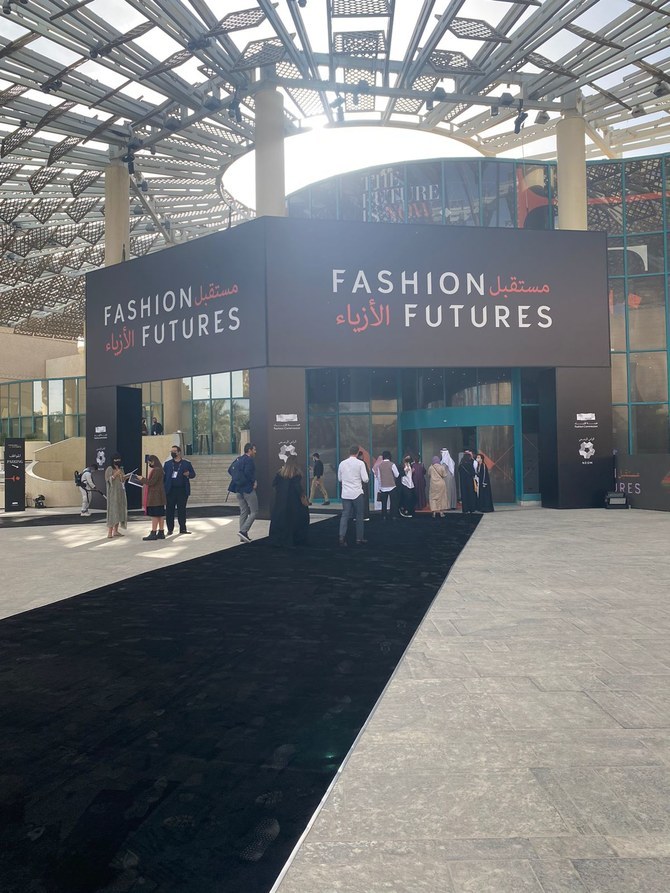How people talk about fashion in Saudi Arabia

https://arab.news/meafq
Fashion continues to evolve with changing times and people’s preferences. It goes far beyond aesthetics, beauty and trends, which are consistently the most visible parts of the industry.
People now look at clothes and fabrics from the perspectives of ethics, sustainability, inclusivity and innovation. The fashion industry is not immune to imperfection, as it is the second most polluting industry in the world. The influencer market, bloggers, Snapchatters and YouTubers — growing in number by the minute — are occupying a fair share of the fashion dilemma. They are paying more attention to these issues.
We can see glimmers of hope and progress.
Nirvana Abdul, a fashion and lifestyle niche influencer from Jeddah, caught the attention of the audience attending the recently concluded Fashion Futures 2021, the Kingdom’s first fashion platform launched in Riyadh and one of the initiatives of the Saudi Fashion Commission.
Nirvana narrated her first experience in building a fashion brand on social media. “We buy new clothes to impress our followers . . . I was on Instagram like many other bloggers at the beginning of building our brand; many of us show an ‘outfit of the day’ and we have this pressure that we always have to share something new! But then it went too far to the extent to buy new things that we don’t need just to show our fans that we have new content for their likes and comments. Unfortunately, a lot of influencers are still doing this,” she said.
It is clear that influencers have revolutionized not only the fashion industry but also society, and if they use their power for good they can propel the industry toward a brighter future. And yet a better alternative would be that the average consumer builds immunity to influencers rather than giving them more authority.
We should admit that we have made many purchases when online shopping was scaling and still trending more than ever, especially at the height of the pandemic. Most brands shifted their sales to e-commerce when lockdowns struck, and now online stores are responsible for a significant percentage of sales.
The rise of online shopping has given us more options than ever before when it comes to buying clothes.
It is impossible to talk about the future of the fashion industry without mentioning future generations. The most interesting project for the Saudi Fashion Commission this year was the launching of the Saudi 100 brand program, which received more than 1,400 applications.
You can notice the apparent adoption and integration of cultural characteristics in the brands exhibited, which can be transformative, not only for the local culture but for the whole world. Yet, how can we ensure future actions will be driven by social and sustainable values?
To make a true, holistic transition to sustainability, a brand must address a multitude of facets of its business, from the materials used for their products to the means of production and the disposal of industrial waste, and more. It is not an easy path, but it is definitely a necessary one.
Fashion is linked to its cultural power, connection, communication and, above all, transformation. I remember many women used to borrow or rent wedding dresses and gowns in the old days, and so if there is a societal tendency to shop second-hand, how can we support it and can it be emphasized through cultural movements?
Another interesting movement that took place this year, in addition to the Fashion Futures and the 100 Saudi Brand Exhibition, was the hosting of the Global Fashion Exchange, an international platform renowned for promoting sustainability within the fashion industry worldwide and bringing an acclaimed clothing swap event to Riyadh for the first time. This wave of transformation not only reset the consumers’ mindset but is also slowly pushing the industry toward more sustainable actions.
Now more than ever, sustainability and fashion have to walk side by side, as fashion without purpose should not be considered fashion.
Brands can work on being more environmentally friendly. Today fashion professionals explore sustainable materials as a result of the increase in research and development of new sustainable materials. The industry can count on hundreds of alternative sustainable materials, cheap or expensive. But how can we guide local brand owners to see their options and understand their designer’s role in this wave of transformation toward sustainable solutions in fashion?
On top of this, the future of fashion also means transforming it into a more plural and inclusive society — embracing size, gender and color.
It is essential to engage in conversations on the next steps and what the future holds. People are the key and, together, we are stronger.
These fashion events elevate individuals and collaboration through shared and empowered thoughts, actions and values. It strengthens local cultures and economies through these connections, and the result turns out to be even more powerful, not only for the community itself but for the entire world.
Even though there’s still a long way ahead of us as well as different challenges to overcome, there’s also a lot of opportunities. I believe essential changes are coming at a slow pace but with growing urgency and awareness.
Can you imagine how the fashion industry will look in the next five years? Or in the next 20 years? And if so, what must be done to ensure these long-term changes are adapted?
Let me know your thoughts.
• Roba Aljohani is a writer who uses her background in journalism to uncover and tell interesting stories related to sustainability and culture.










































